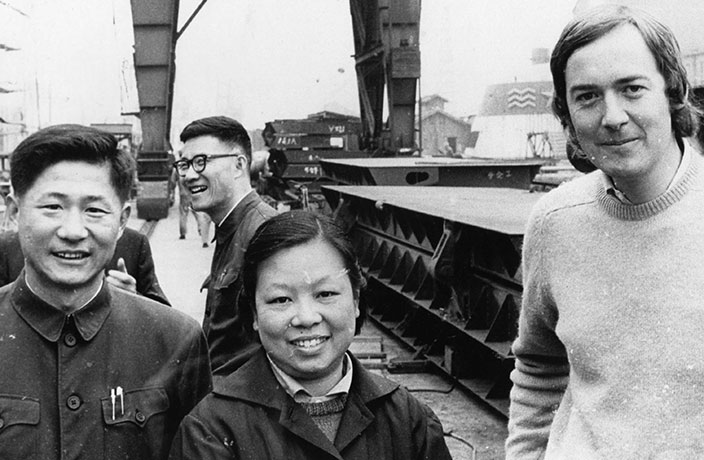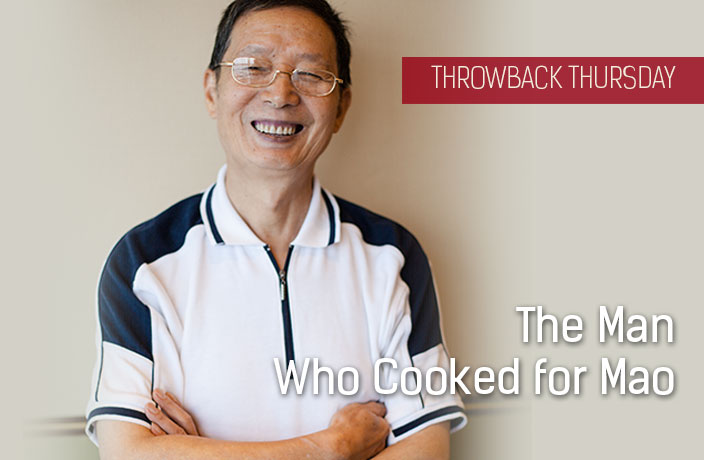Throwback Thursday is when we trawl through the That's archives for a work of dazzling genius written at some point in our past. We then republish it. On a Thursday. With Deputy Editor Monica Liau leaving us at the end of August, this is the Month of Monica...
Early in the morning on sunny days you’ll see them, flocks of geriatric men slowly shuffling towards local parks and green spaces. Most are over 50 years of age carrying one or more quiet, covered cages.
.jpg)
Huaihai Park is one of the major meeting places, though you will find them in most parks around town. A particularly large group - always men, always old - converge like a secret club. With ritualistic intensity, each member carefully scans the tree branches, looking for a prime spot to hang their cage. Once hung, the man will uncover his ward and song immediately bursts forth. By 9am, hundreds of bamboo cages clutter the trees, their trilling din reaching a cacophonous crescendo.

Most of the birds you’ll see during these gatherings are Chinese Thrush, or ‘Huamei’ 画眉, which means blackened or painted eyebrows. They can’t be taught to speak, but their singing voice is considered the sweetest. Like their owners, all of the birds are male, because they are the only ones who sing. In the wild, their voice helps them show bravado and find a mate.

Most have been captured in the wild from the mountains of Yunnan, Sichuan and Guizhou, and now live a solitary, caged existence. That’s why their owners say it’s essential to get them outside in the sun, and around the voices of other birds. “These birds get lonely in their cages,” one 64-year-old bird owner told us. “At home they don’t speak, so we bring them out to hear their song.”

The tradition of caring for birds stretches back into Chinese history, when scholars waxed philosophically while their caged birds warbled. Mr. Li (pictured) , who has been coming to Huaihai Park since he retired six years ago, told us that many of the old traditions remain; a lot of emphasis is put on the bird’s food and water bowls, the most expensive being made of the porcelain which go for thousands of yuan. When asked why one would spend so much on a bird, Mr. Li shrugged and said, “It’s more beautiful that way.”

How to teach your bird to talk
The most intelligent and social talking bird in China is the Mynah, or ‘Bage’ 八哥. To give it the gift of gab, you must buy it young before it loses its baby down (untrained older birds are notoriously slow witted). Keep your young bird constantly close to people so it gets used to their presence.
Once your bird is relaxed at home, a bit of simple surgery is needed. Your bird has to have a flexible tongue so it can roll its rs and speak clearly. This means the connective tissue below its tongue is snipped (human singers, especially opera, have been known to get the same surgery).
.jpg)
Once the tongue heals (after about two weeks or so), training must begin. Morning is best, as the birds are naturally most active then. Start simple - 'Ni Hao!' 'Wei?' 'Zai Jian!' 'Bye Bye!' – and repeat ad nauseum for about 20 minutes. Reward the bird after every teaching session.
If you’re lazy, you can also buy a tape recorder, and record yourself . So your a lousy teacher? Never fear. Just leave your bird outside on the busy street where they’ll at least learn to mimic the beeping cars and motor scooters.
This article first appeared in the May 2011 edition of That's Shanghai. For more Throwback Thursdays Click Here
.jpg)



.jpg)

















0 User Comments